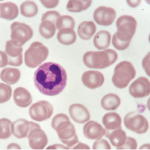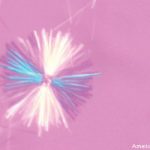One physiological stimulator of NETosis may be neutrophil swarming, and this process is intriguing to researchers as well, said Dr. Radic. “Neutrophil swarming is the coordinated gathering of neutrophils. This migration can be induced by infectious pathogens, like toxoplasma, and localized cell death may occur due to trauma or physical injury” that could be the early trigger of inflammation in rheumatic disease, he said. “The signals that induce swarming and the receptors on the neutrophils that allow them to respond are an active area of research. In part, this neutrophil migration is thought to form the basis for subsequent events in inflammation.”
NETosis provides an amplification step in the inflammatory process and promotes pro-inflammatory gene expression, said Dr. Radic. It allows the release of the neutrophils’ granule contents and chromatin.
“There seems to be a mutual relation between NETosis and neutrophil swarming in that neutrophils that undergo NETosis attract even more swarming neutrophils to the site,” said Dr. Radic. “Conversely, swarming seems to predispose cells toward NETosis. So, mutually, these events seem to foment each other.”
Resolving Role
Neutrophils also have strategic and tactical functions, said Martin Herrmann, PhD, scientific group leader, Autoimmunity Research and Cellular Immunology, at Friedrich-Alexander University in Erlangen, Germany.
NETs play a key role in the induction of gout, and “the resolution phase of inflammation in gout is as important as the induction phase,” he said. If inflammation is not controlled after an infection or injury, it becomes problematic. NETs contribute to the resolution of MSU crystal-induced inflammation in gout. Dr. Herrmann described a vicious circle of activity: neutrophil recruitment, NETosis, and IL-8 release. NETs’ role in gouty inflammation induction and resolution may yield more clues in understanding autoimmunity in general, he said.
In the early phase of this type of gout, MSU crystals induce the formation of NETs and release of pro-inflammatory cytokines and chemokines. “At high neutrophil densities, NETs tend to aggregate. It looks like this is an amorphous material which forms the basis of tophi,” he said. But the cytokine and chemokine release by the aggregated NETs is strongly reduced. The aggregated NETs sequester and degrade these pro-inflammatory mediators. In MSU crystal-induced gout studies in vivo, aggregated NET formation depends on ROS production, he added.
Oxidative burst is required to prevent MSU-induced bone destruction and resolve MSU-induced inflammation, Dr. Herrmann added. Neutrophils and their activity are required for the resolution of inflammation in gout, and he described studies where neutrophils were depleted from mice with paw edema, causing their inflammation and swelling to become chronic.1


